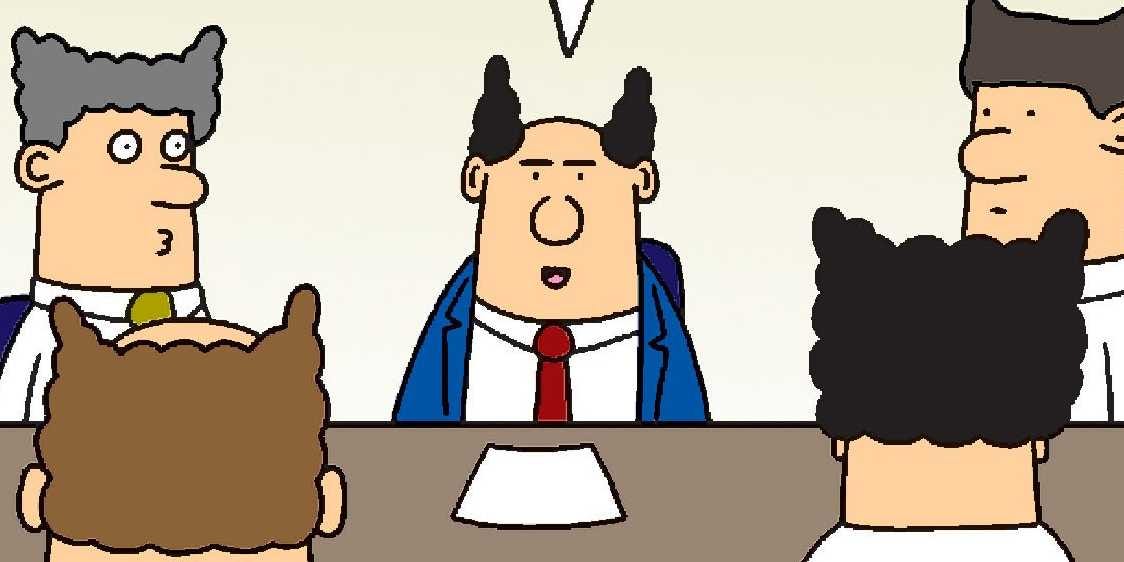Introduction
This is the first of a couple co-written articles by Joe Maruschak and John Szeder.
Joe is an Investor with the early-stage seed-fund Coast to Crest. He is a startup founder with two successful exits who turned his attention to community building, starting a biotech incubator and running a startup accelerator program for 5 years. He also is a consultant who works with growth-stage companies transitioning from startup to scaleup. He has worked with hundreds of early-stage founders. You can read more of Joe’s writings on Medium.
John is the CTO of a startup building blockchain games and a veteran engineering leader with over two decades of startup and games industry experience. He is blogging for educational and therapeutic reasons at https://www.mofactor.com and soon hopes to announce what he is working on full time.
We both have had experience mentoring startup founders and employees we have worked with, and through our discussions on the challenges of mentoring and how it relates to the growth of companies, we thought it would be useful to get some of our collected thoughts out there in the hopes it might help.
What is mentoring?
John:
At some point in your career you will have checked off a considerable number, if not all, of the professional accomplishments you wish to attain on your work bucket-list. While you are on your way towards that goal you will achieve a level of fluency with your chosen profession that lets you take a step back from your work and ask yourself “how does this compare to other people?”
If you find yourself in this position, and you have given some people some guidance to help increase their level of fluency with work, then congratulations! You have exercised mentorship!
To me, mentoring is providing some of your experience to other people in a format that lets them benefit from your mistakes.
Joe:
I found this great definition online:
“Mentoring is to support and encourage people to manage their own learning in order that they may maximise their potential, develop their skills, improve their performance, and become the person they want to be.”
I picked that definition because it has some key concepts that I like. Key to this is that mentoring is the process of assisting someone to manage their own growth. It is not the job of a mentor to teach you like a high school teacher would. The goal of a mentor is to guide you as you do what you need to do to grow.
A mentor’s job is not to set a goal for you or give you direction. A mentor’s job is to guide you in the direction you set for yourself. Much of the work is a look inward; a guided tour of self-discovery. A mentor holds up the mirror so you can accurately see yourself.
As part of this process, a skilled mentor can give you tasks and projects that help you develop skills that you may need on your journey. The mentor can teach a technique, and critique the practice, acting as a coach.
In this way the mentor can help a person unlock what is already within them in order to discover things about themselves they did not know and enable them to do things they did not yet know they were capable of.
Why Mentor?
John:
I have had a few conversations with executive-level people who bootstrapped their way to success. Most of us never had a mentor and we made a lot of mistakes along the way. I find that is one of the biggest reasons I mentor people. One of the struggles as a technical leader is this strange dichotomy with keeping product-development flowing and reducing technical debt at a reasonable rate at the same time as working on succession and giving people room enough to fail at things in order to grow professionally. Mentorship helps to provide some of the growth people need if you can find the right structure and format to impart the things you learned to them, often the hard way.
I find mentorship to be one of the most important things to do when I am in an executive role, or senior leadership role on a team. I often mentor people directly outside of my organization as well; sometimes as a part-time recruiting activity, and sometimes to help make sure that what I am doing to mentor people is effective when the table-stakes do not include how they are measured in their end-of-year bonus.
Setting aside all of those reasons, I also do it because I think it is a decent thing to help people grow, and it feels good when it works.
Joe:
Not to get too ‘meta’, but I think that the world is a better place when everyone is functioning and living their life to the fullest of their potential. When you encounter someone who is excited to ‘make a dent in the universe’, there is a moral obligation to assist in achieving that if you are able to help.
As a species, I think that unlocking our potential is the highest form of what it means to be human. As it relates to what I do, which is helping people build companies, it often means helping people learn how to inspire and focus others on a common shared goal. Working with others to create outcomes that would be impossible alone is an amazing thing to experience. It is empowering to do it; it is doubly empowering to be able to help others learn how to do it.
Personally, it is out of profound empathy for others that I mentor. I spent the first half of my life feeling a bit lost. It was only after I started a company that I felt like I had found my calling. I see the struggle in others, and when I can help them to stop struggling and point them on the way toward where they would ultimately arrive, I feel compelled to do it. There are many who go through life and wind up at the end feeling that their life was somehow half-lived. If I can empower a few to explore and experience it fully, then I feel that I have done some good, and in some way earned a chance at redemption for the sins I have committed.
How can you find a Mentor?
John:
There are a few different ways to find a mentor. Some companies have created internal formal mentoring programs. There are many reasons to create a formal mentoring program for a company; from succession to retention to trying to break apart tribal knowledge clusters. Finding a company which has a mentoring program will be hit or miss.
In addition to formal mentoring, you can also find an informal mentor. Maybe it is someone you worked with in the past or want to work with in the future. I have a long view on recruiting and sometimes I connect with people I do not immediately hire for whatever reason. I have informally mentored some of them over the years with the hope that our paths may someday cross.
You might meet a mentor giving a presentation on something interesting at a tradeshow. I recently joined a service called LunchClub and it is likely at least one of the people I met there is someone I will wind up mentoring.
Joe:
It starts with a decision to grow. When you are ready to get real and improve, it is the right time. If the goal is just career-advancement and the focus is transactional and the goal is part of a corporate-ladder-climbing exercise, your success will be limited and any mentor you get may not be able to help you much. When you are ready to REALLY grow as a person and unlock the potential within, it will be obvious and good mentors will be very open to working with you.
The best way to find a mentor is to seek out someone who models who you want to be. You see someone who seems to effortlessly solve a problem that you could not solve, or one who goes into a meeting and gets the outcome you could not seem to get. You think to yourself “How were THEY able to do that?” When you see in them a vision of what you think your future-self could be, you may have found your mentor.
How can you find a Mentee?
John:
If you are a mentor, and looking for mentees, just look around you. The world is filled with promising young people who may or may not be outright asking for guidance or assistance, but certainly would benefit from it.
The previously-mentioned Lunchclub would be a good way, or just reach out to someone who is writing interesting articles on the internet or has a commanding social media presence. Start by asking questions and being appreciative of their help and answers.
Joe:
Open your eyes and look around. Potential mentees are everywhere. Be open to entering into a relationship as a guide. A mentor/mentee relationship is two-way. You often learn as much as the mentee from the process. Along the path to being a better leader, first you lead, then you teach others to lead, and then you teach others to teach others to lead. It is a never-ending ‘leveling up’ and it takes practice and to keep sharp; you need to keep doing it all the time. It is also a test of the mentor. A good mentor never stops growing or learning, so as a mentor looking for a mentee you need to be aware of your own growth, your own path and challenges, and seek out situations and relationships that will challenge you to help you grow.
What do you do as a Mentor?
John:
I accidentally started mentoring the first engineer I ever hired. It was a young student who was looking for a games-industry summer job, and my little one-man shop happened to be the only game studio around. I was boot-strapping at the time, and while I found him to be very impressive, I felt a little guilty that I could barely afford to pay him anything. Accordingly, I thought it would be a good idea for me to include, as a part of his daily schedule, some time where I essentially just teach him things about what work means and how I was functioning as a developing business owner; things that I was pretty certain he was not learning in engineering college.
The student in question professionally flourished over the next decade. I feel that his success was greatly increased through the mentorship he received, and it inspired me to provide that to people.
I never really thought about it at the time, but some time in the intervening years I got to the point where I set up formal 1:1 meetings with people on a weekly, biweekly, monthly, or quarterly basis to meet and either give them a long-winded bloviating sermon about something on my mind, or else I let them ask free-form questions.
Sometimes people are looking for specific mentoring help, in which case it makes sense to set up something that is more goals-oriented and maybe includes a little bit of homework between meetings.
At the end of the day I find that mentoring is a bit of talking, a lot of thinking, and much, much more listening.
Joe:
I ask a lot of questions. Being a mentor is being a guide to someone discovering themselves. It is my job to hold up the mirror so they can more clearly see themselves, and to ask questions that encourage them to think more deeply.
When I mentor I try to be very careful not to give the answers, but to ask the right questions. The process of discovering the answer is up to the mentee. This is important to me. To give someone the answer takes away their agency, and having agency is important to the process of knowing oneself and developing personal leadership—the first step in becoming a leader.
I often use metaphors to suggest a way of looking at a concept or situation. When confronted with a challenge I try to tell a story from my own experience that has the same characteristics of the problem with which the mentee is dealing. I walk through the story, explain what I thought was important, and why I think it is similar. Then I describe what I did and what the outcome was. I think it is very important to explain that my solution was one of several possible outcomes and that doing what I did may not bring the same results. The goal is to give the mentee a way to think through an issue or problem, and not give them the answer.
In certain circumstances, I do offer little tips and tricks that help someone be personally more effective, but these are frequently very specific and usually have to do with language choice in meetings and similar ‘tactical’ learnings.









